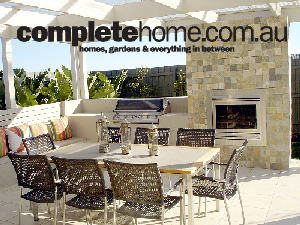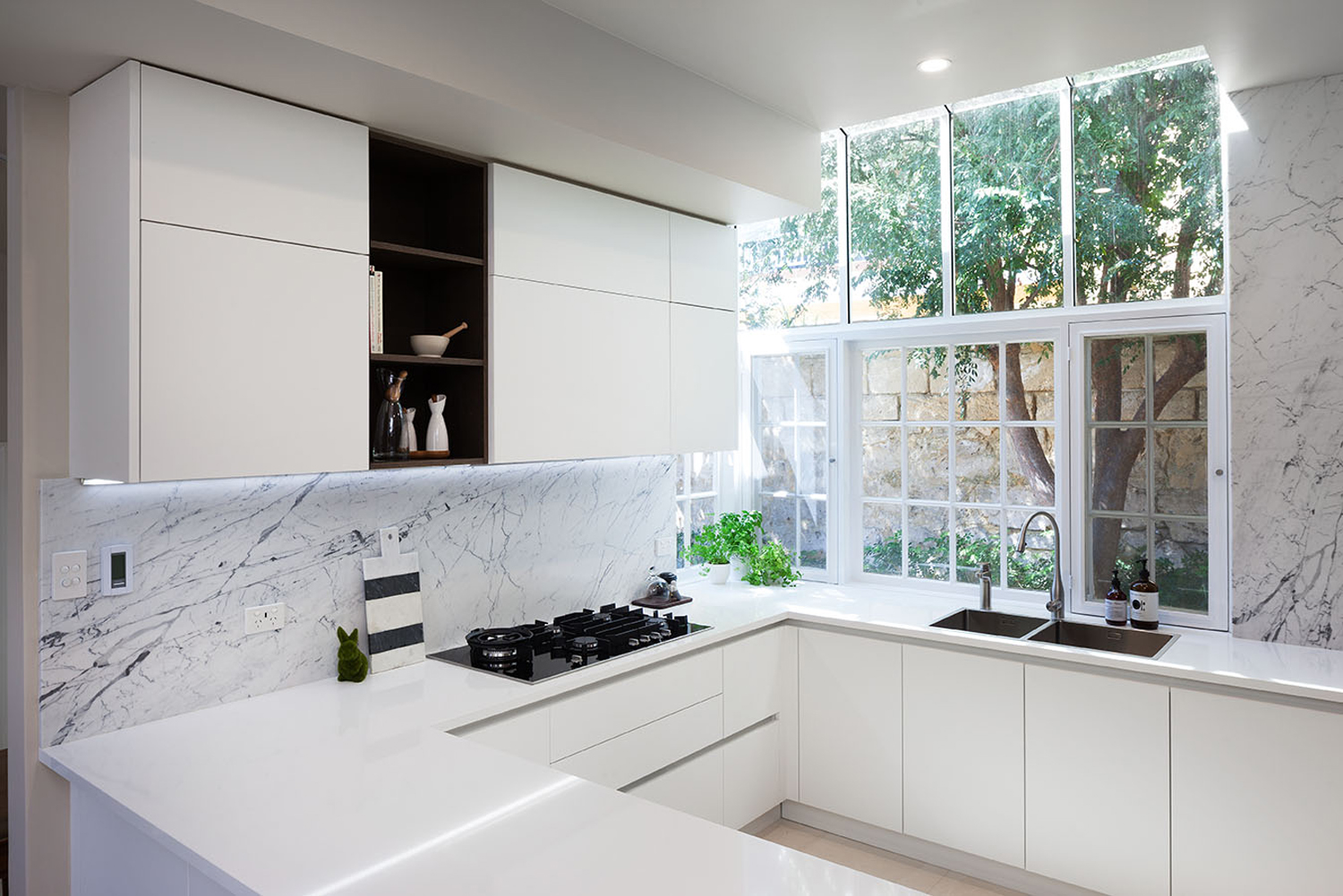It’s a warm summer evening and the guests are about to arrive. You’ve pushed back the doors to open the back of the house and the table just outside is set, flickering with candles. Fragrance from the garden washes through the house with a gentle night breeze.
When outside and inside intertwine, you can have the best of both worlds as your favourite entertaining space. Part covered and protected but still open to breezes and outdoor ambience, and fitted out with all the conveniences of modern living, this area will become the heart of your home during the warmer months, or all year-round in subtropical climates.
The first step is to find a way to open part of your home to the outdoors. Best aspects are north to north-east to maximise warmth, but southerly and westerly aspects can be used if protected from hot sun or cold winds. Most homes have an informal area to the rear of the house to maximise privacy but with some careful screening and fencing, side- and front-facing rooms can be opened, too.
Colour and natural light
The most important part of the design is to blend the inside with the outside, so that it’s hard to tell where one ends and the other begins. Seamless transition spaces carry through the same materials, furnishings and colours, but also need to have a similar light quality, otherwise the boundary between the two is still very obvious.
Bring as much natural light into the house as you can by using pale colours, reflective surfaces and possibly a roof window as well. Filter bright sunlight in the outside area, either with a covered area that doubles as rain protection, or a tree or vine-covered pergola. Choose lighting that gives a similar illumination in and out, both in intensity and colour temperature.
Doors and windows
Floor-to-ceiling glazed folding doors allow almost uninterrupted views through when closed and can be pushed back to open up the full width of the room. If you don’t have a deep eave, you’ll need some outside covering to shade them in the heat of summer or invest in double glazing, which will also minimise winter heating.
Multiple sliding doors can be integrated with sliding timber or aluminium shutters so you can put shade where you need it on a western side, while still having the room open to the breeze. If you can’t have doors right across the opening, louvre windows allow unimpeded views and can be angled and opened in separate sections. A simple pair of glazed double doors can be enough to establish a strong connection between inside and outside areas.
In places where you want to keep insects out of the rest of the house, there are slide-away mesh screens that completely retract into a side or top housing when not needed, including motorised versions.
Shade and protection
A part-covering outside the house will make it feel more like an extension of the room, but covered outdoor areas need to vent so heat doesn’t build up. Rotating louvres over a pergola, bamboo screening or slatted timber all give filtered shade. Polycarbonate awnings are notorious for heat build-up, so if you need a permanent lightweight covering, make sure it’s not set underneath the eaves.
Materials and plant life
Once you’ve established an indoor-outdoor space, look at how you can use the same materials to blend the two together. Flooring options that go from indoors to out include timber flooring merging into stained decking, polished and seeded concrete and stone tiles and pavers in granite, basalt, travertine and limestone. You can buy terracotta, quarry and ceramic tiles for outdoor use that match those inside, or you could find a paver in the same colours and proportions.
If you have carpet throughout the house, you could even carry through that look with anoutdoor polypropylene marine carpet in a similar colour. Outdoor sisal-look rugs give an indoor elegance, and can shade darker paving in summer or keep draughty decking warmer in winter.
Although it’s good to blend your outdoor entertaining space with an inside room, make sure there’s still a distinctly outside feeling about it by incorporating lots of plants. This will link it through to the garden beyond, so there is a natural flow all the way. Large pots and raised planter beds are easier to look after and less likely to get tripped over by unsuspecting guests. Use some of the same plants in both pots and the nearby garden so there’s an immediate connection.
Zones and screening
To make the most of your indoor-outdoor entertaining, find ways to break up the area into smaller zones for more intimate occasions, as people feel more comfortable in a space that suits the numbers. If you have different age groups to entertain at the same time, a separate zone for teenagers or older children can make a better night for all.
Moveable screens of bamboo and timber slats, decorative panels of laser-cut metal or glass, open ironwork, fabric panels or woven wicker can be moved aside to open an area for parties. Make sure they’re well-secured in windy areas. Raised planter boxes on outdoor castors filled with lush foliage can be used as a room divider or wheeled aside. A white roll-up PVC blind can do double duty as an outdoor movie screen.
Indoor-outdoor furniture
Outdoor furniture is now so classy and comfortable there’s no reason not to use it indoors as well, so there’s no discernible change from indoors to out. Timber, aluminium, stainless steel, synthetic wicker, faux stone and glass are all good materials outside that look at home in the same styles you’d enjoy in your loungeroom.
Flexible outdoor lounge seating means you can reconfigure the modular units to form an extended couch plus chaise for a larger group or split it up into separate chairs for a smaller gathering. Make sure you don’t position furniture in natural passageways, so it’s easy for the party to spill out beyond the main entertaining area further into the garden or down to the pool.
Outdoor tables are also available as extension tables, so you can accommodate from six to 12 guests. Although they look good, large, round or square tables are less practical unless you always have a crowd, as they feel too big for a few diners. Some dining designs also have extra seating ottomans that can be hidden away under the main chairs or a nearby coffee table.
Fabrics and lighting
Soft fabrics are an essential part of outdoor decorating. Outdoor fabrics now have a huge range of textures and patterns, looking like anything from fresh cotton chintz and linen through to velvet and silk. Mix stripes, spots, checks and florals on seats and occasional cushions, beanbags and tablecloths for the latest look.
Quality outdoor lighting gives you the right ambience for dining, cooking, partying or a quiet evening with a few close friends. Dimmable lights or independent switching mean more flexibility to create the right mood. Although many lighting experts recommend lighting with concealed fixtures, for extra pizzazz you can hang an outdoor ironwork chandelier for either LEDED budlights candles or use stylish all-weather table lamps such as the Umbo collection. For added atmosphere when entertaining, use lanterns and torches.
Lighting can also be used to accent or highlight features in the landscape to present an attractive view at night when viewed from inside the home, helping to further link outside and inside spaces.


